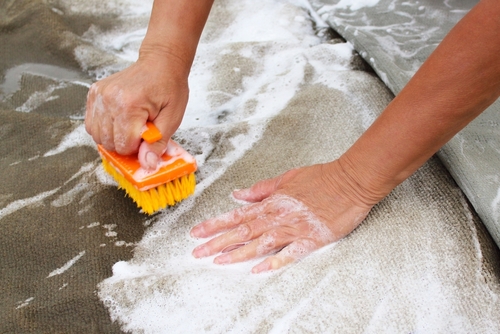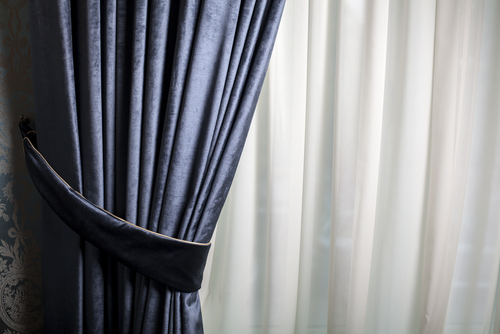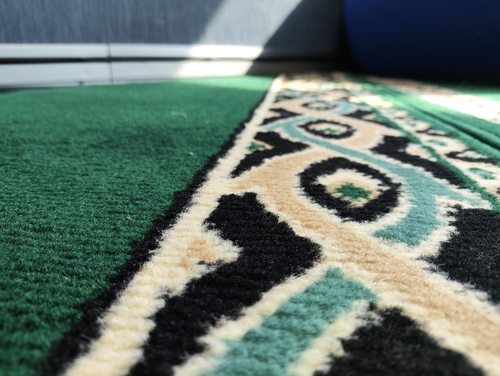
Pros and Cons of DIY and Professional Curtain Cleaning
November 10, 2023
Carpet Shampooing and Carpet Health: Mold and Mildew Prevention
December 26, 2023The Battle Against Bacteria and Mites in Dirty Curtains

The Battle Against Bacteria and Mites in Dirty Curtains
The Battle Against Bacteria and Mites in Dirty Curtains. Our homes are sanctuaries, yet a microscopic world thrives within the seemingly innocuous folds of our curtains.
Unseen to the naked eye, various bacteria and mites establish colonies, finding the perfect environment for survival and growth in our draperies.
The cleanliness of curtains is not just a matter of aesthetics; it is a health imperative. Recognizing the potential risks of unclean curtains is the first step towards fostering a healthier living space.
Recognizing the Problem
Curtains can harbor various bacteria and mites, some of which may pose health risks. These organisms feed on the dust, skin flakes, and other organic materials that accumulate in the fabric folds.
Telltale signs include a musty smell, visible dust accumulation, and increased allergy symptoms among residents, suggesting the need for a thorough cleaning.
The Health Implications of Dirty Curtains
Exposure to bacteria and mites can trigger respiratory problems, allergic reactions, and skin irritations. Prolonged contact with these microorganisms can significantly harm individuals with weakened immune systems.
Children, the elderly, and those with pre-existing health conditions such as asthma or eczema are particularly vulnerable to the adverse effects of these microscopic invaders.
Bacteria in the Drapes
Curtains may contain various bacteria, including Staphylococcus and Streptococcus species, which are known for their potential to cause infections.
Warmth, humidity, and lack of sunlight are ideal breeding grounds for bacteria. Regular air flow and light exposure can inhibit their proliferation.
Mites: The Microscopic Menace
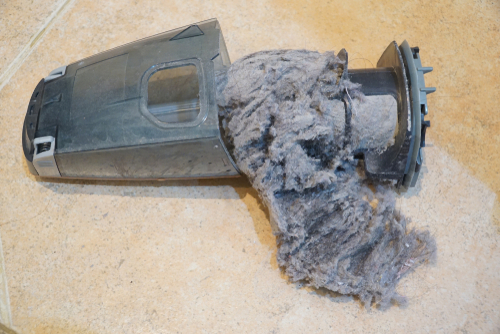
Mites are tiny arachnids barely visible to the eye. Their presence can be inferred from the symptoms they provoke, such as sneezing, coughing, and itching.
Mites feed on organic matter and flourish in seldom-disturbed environments, such as heavy draperies’ undisturbed folds.
Contributing Factors
Poor ventilation, high indoor humidity, and lack of regular cleaning contribute to the contamination of curtains with bacteria and mites.
High humidity levels and warm temperatures create an ideal habitat for these organisms, accelerating their growth and reproduction.
Prevention Strategies
Regular dusting, airing out rooms, and sunlight exposure can significantly reduce the presence of these organisms in curtains.
Good ventilation helps to reduce indoor humidity, and natural light can act as a natural disinfectant, hindering the growth of bacteria and mites.
Regular Cleaning Routines
Establishing a routine cleaning schedule is crucial for controlling the population of bacteria and mites. Regular washing and dusting can remove the organic debris that feeds them.
Vacuuming with a brush attachment, gentle laundering, and exposure to sunlight are all effective at maintaining curtain hygiene.
The Role of Professional Cleaners
Professional cleaning is recommended when curtains are heavily soiled, high-grade sanitization is required, or when dealing with delicate fabrics requiring special care.
Professional cleaners use specialized techniques and products that can more thoroughly eliminate microorganisms, ensuring a higher level of cleanliness.
Do-It-Yourself Cleaning Solutions
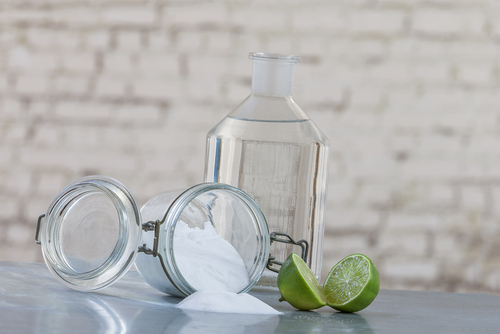
Solutions made from vinegar, baking soda, or tea tree oil can effectively reduce bacterial load and deter mites, although their efficacy may be less than commercial products.
When using any cleaning solution, it’s crucial to consider the fabric type and colorfastness to avoid damage. Always test a small, inconspicuous area first.
Deep Cleaning: The Ultimate Combat
Deep cleaning involves a thorough wash or professional treatment. It’s necessary when standard cleaning methods fail to remove stubborn contaminants.
Step-by-step guide to deep cleaning curtains
- Preparation: Start by removing any hardware attached to the curtains. Carefully take down the curtains to avoid spreading dust.
- Initial Cleaning: Shake the curtains outdoors to remove loose dust and dirt. For heavy fabrics, vacuum both sides using the upholstery attachment.
- Spot Cleaning: Check for any stains. Gently dab the spots with a mixture of water and mild detergent using a clean cloth. Avoid rubbing to prevent the stain from spreading.
- Machine or Hand Washing: If the fabric allows, wash the curtains in your washing machine gently with a mild detergent. Use a bathtub filled with warm, soapy water for hand washing, submerge the curtains, and gently agitate them. Check the manufacturer’s label to confirm the best washing method.
- Rinsing: Rinse thoroughly with cold water to remove all soap residue. If hand washing, refill the tub with clean water for rinsing.
- Drying: Using the tumble dry option on low heat or air dry for machine-washable curtains. For others, gently squeeze out excess water (do not wring) and hang them outside to air dry, but avoid direct sunlight to prevent fading.
- Ironing: If necessary, iron the curtains on a low setting while they are slightly damp to remove any wrinkles. Ensure to check the fabric care label for specific ironing instructions.
- Rehanging: Once the curtains are dry and iron-free, reattach any hardware and hang them back up. This will minimize creasing and will help the curtains to fall neatly.
The Science of Cleaning Agents
Chemical agents often offer more potent antimicrobial effects, while natural agents are gentler and may be preferred for their environmental friendliness.
Effective curtain cleaning agents should have proven antibacterial and acaricidal properties, be safe for the fabric, and leave no harmful residues.
Material Matters: Cleaning Different Curtain Types
Different materials require specific cleaning approaches; for instance, delicate silks may need gentle hand washing, whereas cotton blends can often withstand machine washing.
Delicate fabrics may require cold water and mild detergents, whereas heavy fabrics might benefit from professional cleaning to ensure deep penetration of cleaning agents.
Mitigating Allergy Symptoms

Regularly cleaned curtains can significantly reduce the number of allergens in the home environment, offering relief to allergy sufferers.
Using dust mite-proof covers and opting for materials that do not easily trap allergens can help in keeping curtains allergen-free.
Tackling Stubborn Areas
Special attention should be given to pleats and folds, as these areas trap more particles and are ideal for microorganism growth.
Use of steam cleaners and stiff brushes can be effective in dislodging and killing mites and bacteria hidden in curtain crevices.
Aftercare: Keeping Curtains Cleaner for Longer
- After cleaning, maintain curtain hygiene by regular dusting, prompt stain treatment, and avoiding dampness.
- Dehumidifiers and air purifiers can help maintain an environment less conducive to the growth of bacteria and mites.
Hiring the Right Help
Inquire about their cleaning methods, experience with specific fabric types, and the products they use.
Seek out providers with recognized certifications and who adhere to industry best practices to ensure a quality service.
Cost vs. Benefit Analysis
While there is a cost associated with regular curtain cleaning, it must be weighed against the potential health costs of neglecting curtain hygiene.
Regular cleaning extends the life of curtains and can prevent health issues that might result in medical expenses.
FAQ
How often should curtains be washed to prevent bacteria and mite build-up?
Curtains should be washed every 3 to 6 months to prevent build-up, depending on environmental factors and usage.
Can I vacuum my curtains to get rid of mites?
Vacuuming can help reduce mites but may not eliminate them. Washing or professional cleaning is often necessary for total eradication.
Are there any health symptoms that might indicate my curtains are dirty?
Increased allergy symptoms, such as sneezing, itchy eyes, and skin rashes, can indicate that your curtains may contribute to poor indoor air quality.
What temperature kills mites and bacteria in curtains?
A hot water wash at 55-60°C (130-140°F) usually kills mites and bacteria.
The Battle Against Bacteria and Mites in Dirty Curtains – Conclusion
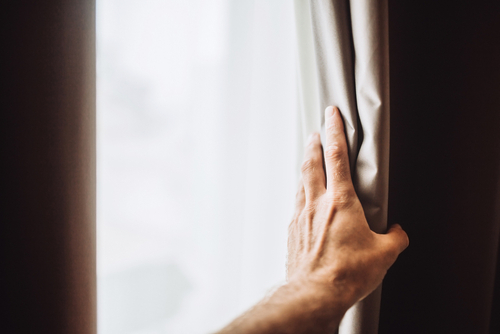
Combating bacteria and mites in dirty curtains is crucial for maintaining a healthy living environment.
Regular cleaning and maintenance of curtains are imperative to prevent the accumulation of harmful microorganisms.
Utilizing appropriate cleaning methods and materials ensures the effective removal of bacteria and mites, safeguarding the well-being of individuals in the household.
Furthermore, investing in quality curtains with antibacterial properties can be a proactive approach to mitigate these risks.
Ultimately, awareness and proactive measures are key in the ongoing battle against bacteria and mites in our living spaces, ensuring a cleaner, healthier home.
Are you seeking professional and reliable home cleaning or curtain cleaning services in Singapore? Contact us today!

